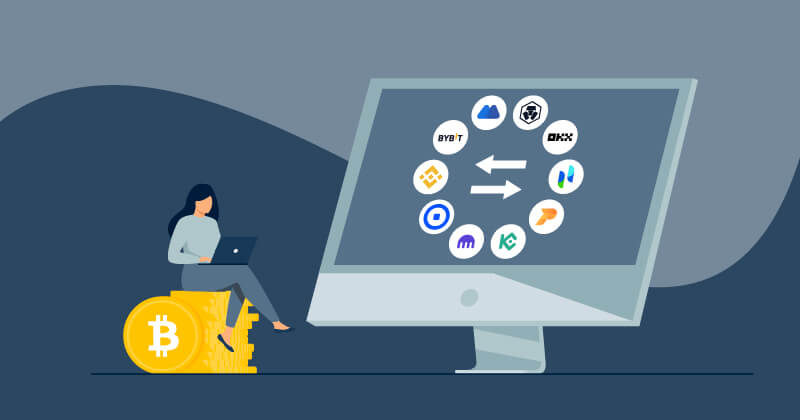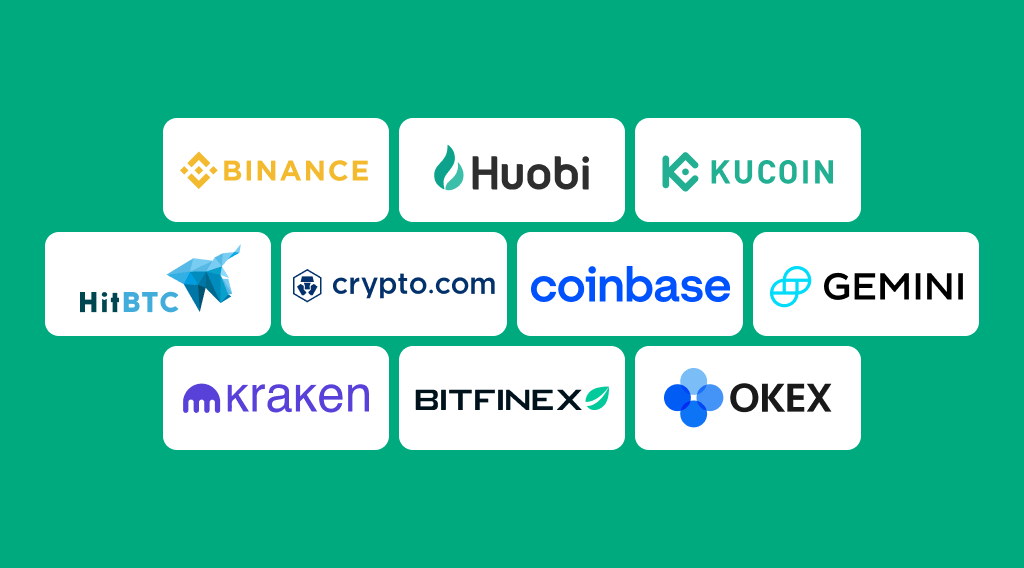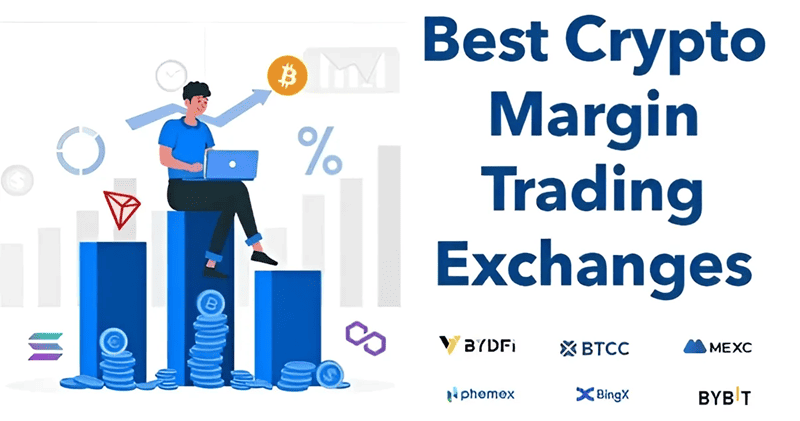Crypto exchanges reviews by fees: it might sound dull, yet your wallet begs to differ! Shrinking fees can give your trades a sharp edge. Imagine holding onto more of that hard-earned cash every time you click ‘trade’. We’re slicing through the cost clutter to deliver you the lowdown on where you can trim the fat. Stick around, because I’ve done the deep dive – comparing fee structures, spotlighting zero-fee legends, and decoding discounts for the big players. Get ready to trade smarter, not harder.
Understanding the Landscape of Crypto Exchange Fees
How Fee Structures Vary Across Platforms
When you choose a crypto exchange, fees matter. They can eat into gains and beef up losses. Not all platforms charge the same. Some have flat fees, others tiered. A flat fee may seem simple. But tiered can save cash if you trade a lot.
Picture this: You spot two exchanges. Both offer Ethereum trades. One boasts a low flat rate. The other a tiered model, more you trade, less you pay. If you trade big, tiered’s your friend.
To compare trading platform costs, look at their fee models first. Low-fee cryptocurrency exchanges might advertise low rates, but the devil’s in the details. Add up deposit, withdrawal, and trading fees. Now you see the real cost.
Let’s dive in. Every exchange has a transaction fee. This is what they charge every time you buy or sell. The best value crypto exchange gives you more than low fees. It serves up good service and secure trades too.
Do zero-fee cryptocurrency exchanges exist? They do, but rare. They make money in other ways, like from market spreads. Yes, even spread can be a cost.
The Real Impact of Fees on Your Trading Strategy
Think about how fees affect your strategy. Day traders feel the pinch more than those who buy and hold. Each trade means fees. So, more trades, more fees.
Talking about strategy, spot trading vs. futures trading fees are different beasts. Spot trading means right now deals. Futures are promises to buy or sell later. Usually, spot fees are lower. But, the game changes with more complex futures.
Understanding exchange transaction fees is vital if you want to stay profitable. High-volume trading fee discounts can lead to more trades and bigger growth. But, you need to crunch those numbers.
If you’re big on trading, you’ll love this. Some platforms cut fees for high-volume traders. Now you’re saving more. Your heavy trading could get discounts, and that adds up fast.
Every time money moves in or out, expect charges. Deposit and withdrawal charges on crypto platforms can vary a lot. We’re talking a few cents to big bucks. And if you want to switch your fiat cash to crypto, there are fees for that too.
Lastly, don’t forget the hidden fees in cryptocurrency investments. From security costs to network fees, they’re there. Good news: some honor loyalty with reduced fees. For those who stick around, trading gets cheaper.
When trading crypto, the platform you pick has a big deal to do with your end game. Fees play a big part in strategy and gain. Choose wisely, trade smarter, and keep those costs low.
Evaluating Low-Fee and Zero-Fee Trading Options
Identifying Zero-Fee Exchanges and What It Really Means
Let’s talk about zero-fee exchanges. Yeah, they’re out there! But what’s the catch? No exchange runs for free. They have bills too. So how do they make money? They might adjust buy-sell prices. This spread means they get a slice of each trade. They might also charge for withdrawing cash or crypto. Or they get interest on your cash sitting with them.
You might wonder, do zero-fee places have the same coins as other spots? Often not. They usually offer less. And their tech might not be top-notch. Fewer features can mean less fun trading. Also, watch for customer service. It may not be swift. So even zero-fee spots can cost you in time or missed chances.
Remember, a zero-fee label can catch your eye. But always look under the hood before choosing them.
Key Considerations for Choosing Affordable Crypto Trading Platforms
Now, let’s find an affordable platform best for you. Cost is key, but it’s not everything. Think about what coins you want to trade. More choices could mean a slightly higher cost, but it’s worth it if you need those coins.
Safety first, always. Low fees mean nothing if your investment’s at risk. A platform should have strong security. Check their history. Have they been hacked? How did they handle it? Don’t overlook this!
Also, how easy is using the platform? A smooth experience saves time and stress. Some platforms seem cheap. But they confuse users. Not so affordable if you make mistakes, right?
Then there’s deposit and withdrawal charges. They can add up quick. Some platforms offer free deposits but take a cut when you withdraw. Always check this before diving in.
Lastly, consider extra services. Some platforms offer tools or learning resources. If they help you trade smart, a little extra fee might pay off in the long run.
By keeping all this in mind, you’ll find a platform that’s both cost-effective and fun to use. Happy trading!
Discounts and Incentives for High-Volume Crypto Traders
Navigating High-Volume Trading Fee Discounts
When you trade lots of crypto, costs cut into profits. It’s smart to look for exchanges that offer discounts for heavy trading activity. How do these discounts work? They often use tiered fee models. Simply put, the more you trade, the less you pay per trade. This is a win for active traders.
Some exchanges slash fees as your volume grows. Others use points or reward systems linked to the trade amount. For this, compare trading platform costs. You’ll find a sweet spot to max out benefits. Remember to check each site’s rules for these trades. Get it right, and save big.
Loyalty Programs and How They Reduce Fees
Loyalty programs are a boon for serious traders. They work like airline miles. The more you trade or hold currency in the exchange, the more perks you get. These perks can include lower fees. Some programs even offer zero-fee trading for top-tier members.
To spot the best value crypto exchange for loyalty benefits, look at their loyalty tiers. Low-fee cryptocurrency exchange sites often have these offers. Joining them is usually easy. But do read the fine print. Understand how to move up tiers and keep your costs low.
Joining a loyalty program can mean paying less over time. Each trade can score points to climb tiers. Your fee rate shrinks as your tier grows. It’s like a game where playing can shave off costs.
Some top exchanges offer cash back on trades too. That’s more money back in your pocket. So, find an affordable crypto trading platform that values loyal customers. This step will pay off.
Not all loyalty programs are equal. Some make you jump through hoops. Others are straightforward and generous. The best loyalty programs make it clear. They show you how to cut down costs while you build your portfolio.
To sum it up, high-volume discounts and loyalty perks matter a lot. They can sharply reduce what you pay. Smart traders use every tool to keep more of their gains. And with a careful eye on commission rates for digital currency exchanges, trading becomes less of a financial burden and more of a profitable endeavor.
In choosing the path of a high-volume trader, look at what rewards await. Don’t overspend on fees. Take full advantage of discounts and loyalty offers. It’s like having a VIP pass in the crypto world. With this, inexpensive ethereum exchange options or cost-effective bitcoin trading is no longer just wishful thinking. It’s smart strategy.
And as with all things in the complex sphere of digital currency, remember to keep learning. As you do, compare, analyze, and choose the most beneficial fee arrangements available. Now, get ready to trade smarter, not harder!
The Hidden Costs of Crypto Exchanges
Exploring the Nuances of Hidden Fees and Security Costs
Hidden fees can turn a low-fee cryptocurrency exchange into a costly one. Let’s cut through the fog. When you see ‘free trading’, look closer. Often, the price you see isn’t the final price you pay. So how do you find the best value crypto exchange? You must dig deep.
First, let’s tackle security costs. Every safe exchange invests in protecting your digital currency. But here’s the catch – they may pass on this cost to you. You may see terms like “insurance fee” or “security surcharge” on your bill. Don’t be surprised if these extra charges show up.
Now, on to transaction fees. They sneak in when you least expect them. Whether you’re trading Bitcoin or diving into altcoins, fees can vary. Each trade can carry a maker or taker fee. Not sure what that means? A maker adds to the market, a taker takes from it. Depending on which you are, fees change.
What about deposit and withdrawal fees? They should be on your radar. Some platforms offer free deposits but charge you to take your money out. Others do the opposite. Key point – always compare trading platform costs. Never skip this step. It could save you a lot.
Security and hidden fees – check them before you leap.
Understanding the Total Cost of Deposit and Withdrawal Operations
Deposits and withdrawals form the backbone of crypto trading. Yet, they can carry steep fees. Quick question: what’s more important, low initial costs or affordable long-term use? If you guessed the latter, you’re thinking smart.
Let’s compare. Flat rates can seem simple – one fee, any amount. But if you only transfer small amounts, they eat up your funds. Tiered models scale to your activity, often a better pick for big movers. Those moving lots of crypto should look for discounts. Some exchanges offer tiered fee structures that reduce as your volume increases.
What about those pesky network fees? They come from the blockchain itself and can swing wildly. Always factor them into your costs. And fiat conversion? If you move money from dollars to crypto, it will likely cost you. Look for exchanges that keep this fee low.
As for the different trading types, spot versus futures, each owns its unique fee setup. Spot trading can be cheaper, as there’s less risk involved. Futures trading often calls for a higher fee due to the leverage used.
Here’s a pro tip: use crypto exchange fee comparison guides. They help you spot the right platform without the headache. And remember, even the minimal fee crypto exchange reviews might not tell the whole story. Do your homework; it will pay off.
To sum up, watch out for the hidden claws of fees. They bite hard into your trading profits. From security to transactions, stay alert. Compare costs, understand the fee structures, and trade smarter, not harder.
In this post, we explored how crypto exchange fees work and their effect on trading. We saw that fees vary by platform and play a big role in trading success. Next, we looked at exchanges that offer low or no fees, but remember, they might make money in other ways. It’s vital to pick a trading place that won’t eat into your profits.
For those who trade a lot, knowing about discounts and loyalty programs can save money. Finally, we covered the hidden costs that can sneak up on you. Always check the full cost of moving your money in and out.
To sum it up, choose wisely to keep more of your crypto gains. It pays to read the fine print and understand the real cost of trading. Stay smart out there!
Q&A :
What are the cheapest crypto exchanges based on trading fees?
When it comes to inexpensive trading, several crypto exchanges offer competitive fees. Typically, these platforms have a tiered fee structure based on your trading volume, and some may offer rebates or lower fees for using their native tokens. It’s crucial to check the latest reviews or the exchange’s fee schedule directly as fees can frequently change.
How can I find reliable reviews of crypto exchanges’ fee structures?
To ensure you’re getting trustworthy reviews on crypto exchanges’ fee structures, look for up-to-date analyses from reputable financial or cryptocurrency-focused websites. Additionally, forums like Reddit, or financial technology blogs can provide insights from actual users’ experiences, which can be invaluable when assessing the cost-effectiveness of an exchange.
Are there crypto exchanges with no fees for trading?
While it’s rare to find crypto exchanges with completely no fees, some platforms do offer zero-fee trading for specific pairs or under certain conditions. It’s essential to read the fine print, as other charges such as withdrawal fees may still apply. Reviews often detail these nuances, helping traders uncover hidden costs.
What factors should I consider when reading reviews about crypto exchange fees?
When reading reviews about crypto exchange fees, it’s essential to consider factors such as the type of fees (maker/taker, withdrawal, deposit), the fee structure (flat or tiered), discounts available (e.g., for high-volume traders or token holders), and how fees compare with industry standards. Pay attention to any red flags raised by reviewers such as hidden fees or frequent changes to the fee policy.
Can reviews help me understand the overall cost of using a crypto exchange beyond just trading fees?
Yes, comprehensive reviews usually cover other costs associated with using a crypto exchange, such as deposit and withdrawal fees, any potential network or transaction fees, and the cost of ancillary services like wallet storage or currency conversion. These costs, when added up, can significantly affect the value you get from an exchange, so they’re essential to consider.






